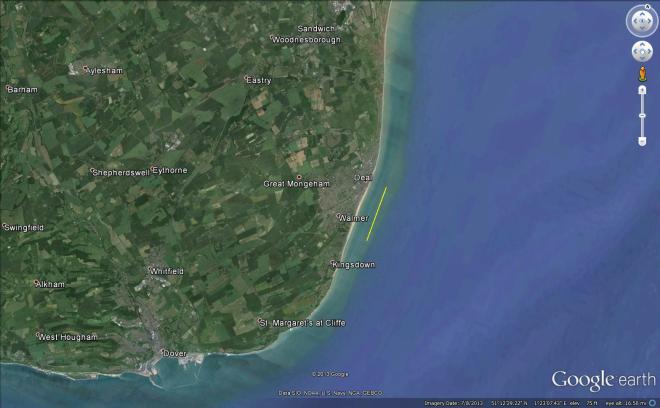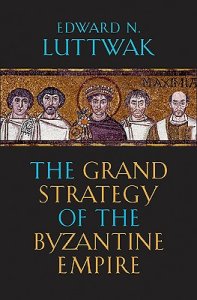In a lengthy post several years ago, I argued that covert paramilitary action is not a viable policy instrument because of its inability to produce decisive outcomes on its own, the high likelihood of embarrassing failure and damage to U.S. prestige, and its propensity to be abused as a policy hedge in pursuit of hazy, ill-defined political objectives when officials feel that they must do something, but are unwilling to commit to a more robust course of action. Covert paramilitary action tends to become an objective in itself when policymakers are unable or unwilling to formulate actual strategy.
In the realm of foreign policy, where there are only bad choices, it has often been considered an ideal third option between inactive passivity and the overt use of military force. However, in the U.S. experience, covert paramilitary action has often resulted in spectacular failures that did not achieve their objectives, embarrassed the United States, undermined policy, and damaged prestige.
Last year, President Obama authorized U.S. intelligence agencies to supply light weapons and military training to small numbers of Syrian rebels. Not that there was any doubt to the contrary, but it is now clear that the operation in Syria is a victim of these same pathologies. A recent Wall Street Journal article details how the U.S. muddled itself into the present state of affairs, with a paramilitary operation woefully inadequate for countering Iranian resources that are bolstering Assad.
U.S. military officials, who sought to do more to help the rebels, saw the covert arming plan as flawed because they believed the effort was too small to make a difference. They argued that the cautious approach to arming such small numbers of rebels actually would handicap efforts to stand up a viable opposition.
The program, at the time, was meant to turn out between 50 and 100 new fighters a month. Overwhelmingly outgunned, they would be up against thousands of Hezbollah fighters in Syria, and thousands more trained and equipped by Iran and al Qaeda.
Within the CIA, many analysts, including Mr. Morell [then-acting Director], agreed the odds were bad, given the mismatch in commitments, officials said. Mr. Nasrallah [Hezbollah Secretary General] had gone all in; the same couldn’t be said of the Americans, these officials said.
In this sense, the current operation in Syria mirrors previous ones in Poland, Ukraine and Albania in the early Cold War, when the CIA supported small numbers of partisans against the Soviet Union despite the fact that such insignificant forces would be of no consequence to the targeted regimes. When called to justify the operations, U.S. officials would deny the existence of concrete military objectives and lapse into noncommittal language about the need to “apply pressure,” “coerce,” “demonstrate resolve,” etc. And so it is with Syria:
The objective wasn’t so much to help the rebels win as to assuage allies who thought the U.S. wasn’t engaged, administration officials privately acknowledge. Mr. Obama’s decision to authorize the program was meant to “relieve pressures and buy time,” one senior official said…
When deeply skeptical lawmakers pressed the administration on what their game plan was, Vice President Joe Biden intervened, arguing that the U.S. had to have “skin in the game” in order to have credibility, according to a former U.S. official. Secretary of State John Kerry and other officials argued that the training and arming effort, through limited, was needed because regional partners like Saudi Arabia were about to “walk away from us,” another official said.
What is it about the use of violence that inclines politicians to think of it as nothing more than a diplomatic signaling exercise? American policymakers have made the same mistake time and time again: using the blunt instrument of military force – both overt and covert – in pursuit of objectives well outside of its nature, in political and social environments beyond their understanding. In Syria, the consequences of failure are not as severe as they were for paramilitary operations during the Cold War, but U.S. prestige has been committed and rival powers are eager to profit from its devaluation:
After Mr. Obama’s decision not to strike in the chemical weapons attack, the U.S. learned that Russian, Iranian, and Chinese officials were discussing how weak the U.S. now looked on the international stage, said one former official briefed on the intelligence…
A longtime American diplomat in the region said that, for now, it looks like Messrs. Assad, Nasrallah and Soleimani have “won.”
The weaknesses of the Syrian program can be boiled down to the following major points:
1. Too small to be of military significance or an adequate demonstration of American resolve to support Assad’s removal.
2. Ill-defined political objectives that are mostly unrelated to the status of the Assad regime.
3. Vulnerable to subversion by Islamist elements, despite its small size and various efforts to guard against this.
According to the Wall Street Journal, administration officials are finally starting to realize that the project was ill-advised:
Some administration officials say, in retrospect, the White House could either have been more supportive of the opposition or more up front about its reluctance to get more involved. “We weren’t consciously bluffing,” a senior defense official said, “but we weren’t committing either.”
Indeed.






